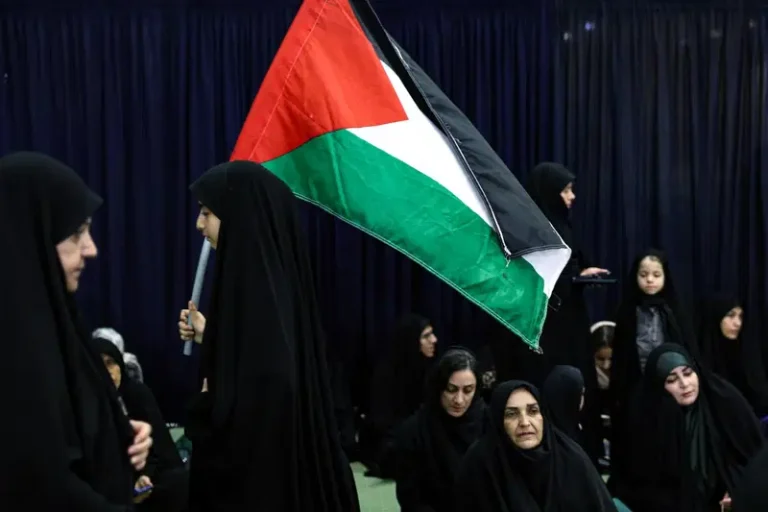Both the Islamic State terror group’s Afghan affiliate and al-Qaida could be ready to launch strikes against the United States and the West sooner than previously thought following the U.S. withdrawal from Afghanistan.
The Pentagon’s third-highest ranking official told lawmakers Tuesday that the latest intelligence suggests Islamic State Khorasan, also known as ISIS-K, is on a faster track to regenerate its external strike operations, though al-Qaida’s terror operatives are not far behind.
“Both al-Qaida and ISIS-K have the intent to conduct external operations,” Defense Department Undersecretary for Policy Colin Kahl said, testifying before the Senate Armed Services Committee.
“We could see ISIS-K generate that capability in somewhere between six and 12 months,” Kahl said. “Al-Qaida would take a year or two to reconstitute that capability.”
Fears that the terror groups could gain strength in Afghanistan following the departure of U.S. and coalition troops are not new. U.S. and Western officials have warned for months that both groups were poised to take advantage of the absence of U.S. boots on the ground.
Officials and analysts cautioned that IS Khorasan in particular had already bolstered its clandestine networks in Afghanistan and surrounding countries in the months leading up to the U.S. pullout.
Attacks sooner rather than later
But the intelligence shared with lawmakers Tuesday suggests both IS Khorasan and al-Qaida may have made additional gains in recent months, allowing them to speed up the time frame, which top Pentagon and intelligence officials previously put at six months to three years.
“I don’t think they are nearly as well-resourced as ISIS in Iraq and Syria were back in the heyday,” Kahl told lawmakers of the threat from IS Khorasan, though he warned the affiliate’s links to the terror group’s global network is troubling.
“They do have a cadre of a few thousand folks, some of which would love to conduct external attacks,” he said. “I think we have to be vigilant that a subset of ISIS-K could develop the resources and the capability to strike outward to the U.S. homeland.”
Kahl’s warning echoes the concerns of other top U.S. officials, who likewise have cautioned IS Khorasan has been steadily building momentum.
During a congressional hearing last month, Washington’s top counterterrorism official, Christine Abizaid, told lawmakers that the group seemed to be taking advantage of the notoriety it got for carrying out the deadly attack on Hamid Karzai International Airport in Kabul in the waning days of the U.S. withdrawal.
“Will it become more focused on the West? Will it become more focused on the homeland than it was?” Abizaid asked at the time.
U.S. officials have also said IS Khorasan has benefited from the way Taliban forces took over Afghanistan, emptying prisons and releasing thousands of IS supporters and fighters.
“What we see is ISIS newly rejuvenated,” General Kenneth “Frank” McKenzie, the commander of U.S. forces in the Middle East and South Asia, told lawmakers last month about the Taliban’s indiscriminate opening of Afghanistan’s Parwan prison in August.
Other U.S. officials now estimate the IS group has at least 2,000 “hardcore” fighters in cells across Afghanistan, though some foreign intelligence services think the number may be higher.
Growth of groups a concern
And there are concerns IS Khorasan’s numbers, as well as those for al-Qaida, could soon start to swell, with intelligence reports suggesting supporters of both groups have started to head to Afghanistan.
Getting a sense of how much both terror groups could grow, though, will be difficult.
Kahl said the U.S. is conducting daily surveillance flights over Afghanistan while also using technical capabilities to obtain information on each group’s plans.
But U.S. military and intelligence officials have consistently warned that getting vital intelligence on the threat is more difficult without a U.S. presence on the ground.
There are also questions about what role the Taliban will play, if any, in limiting the threat of terror plots emanating from Afghan soil against the U.S. and other Western countries.
“We have seen signs … that the Taliban is wary about Afghanistan being a springboard for al-Qaida external attacks, not because the Taliban are good guys but because they fear international retribution if that were to occur,” Kahl said.
U.S. officials have likewise said there is an expectation the Taliban will crack down on IS Khorasan, which already has launched attacks against Taliban targets across Afghanistan.
Still, there is concern that it won’t be enough.
“The Taliban certainly have a vested interest in quashing any Islamic State elements,” Katherine Zimmerman, a fellow at the American Enterprise Institute, told VOA.
“[But] the gap between the will of the Taliban to eliminate the Islamic State and the Taliban’s capabilities to do so seems to be large enough that the Islamic State threat will persist from Afghanistan,” she said.
There are also lingering questions about the ability of U.S. forces to successfully limit terrorism threat from “over the horizon.”
Despite ongoing discussions, the U.S. has so far failed to acquire any basing options that would allow it to establish drones and other assets in the region, instead relying on flights from its bases in the Persian Gulf, some eight hours away.
“We’ve not secured firm basing arrangements,” Kahl told lawmakers, noting ongoing talks with Pakistan, Uzbekistan and Tajikistan.
“They [Pakistani officials] continue to give us access to Pakistani airspace, and we’re in conversations about keeping that airspace open,” he added. “They don’t want Afghanistan to be a safe haven for terrorist attacks, not just against Pakistan but against others.”
Biden critics’ worries
A number of U.S. lawmakers have been highly critical of U.S. President Joe Biden’s decision to move ahead with the Afghanistan withdrawal, charging it has laid the groundwork for a terrorist revival in Afghanistan.
“The consequences of the president’s disastrous decisions are impossible to ignore,” Senator Jim Inhofe, the top Republican on the Senate Armed Services Committee, said Tuesday.
“The danger is likely to grow across the world in our own backyard,” he said, adding that “instead of putting together a real counterterrorism plan for the future, all we get is buzzwords.”
Lieutenant General James Mingus, the Joint Chiefs director for operations, on Tuesday tried to allay those concerns.
“We are actively setting the conditions to ensure we remain situationally aware and are postured to mitigate and neutralize developing terrorist threats,” Mingus told lawmakers.
He also said intelligence estimates that IS Khorasan or al-Qaida could launch terror attacks in six months to a year were, “based on no U.S. or coalition intervention.”
“Our efforts in the months ahead, and as we continue to improve our over-the-horizon architecture, is to ensure that that external capability never comes to fruition,” Mingus said.
Kahl on Tuesday, also pushed back, while admitting the U.S. needs to “remain vigilant.”
“The intelligence community assesses that the overall risk to the homeland across the world is at its lowest point since 9/11,” he told lawmakers, arguing other hotspots are just as dangerous, if not more so.
“We’re focused on the counterterrorism front on Somalia, the growth of violent extremism in places like the Sahel,” Kahl said. “We continue to have to vigilant in Iraq and in Syria and in Yemen.”
(VOA)








124006 952998A really interesting examine, I could not concur completely, but you do make some incredibly valid points. 674542